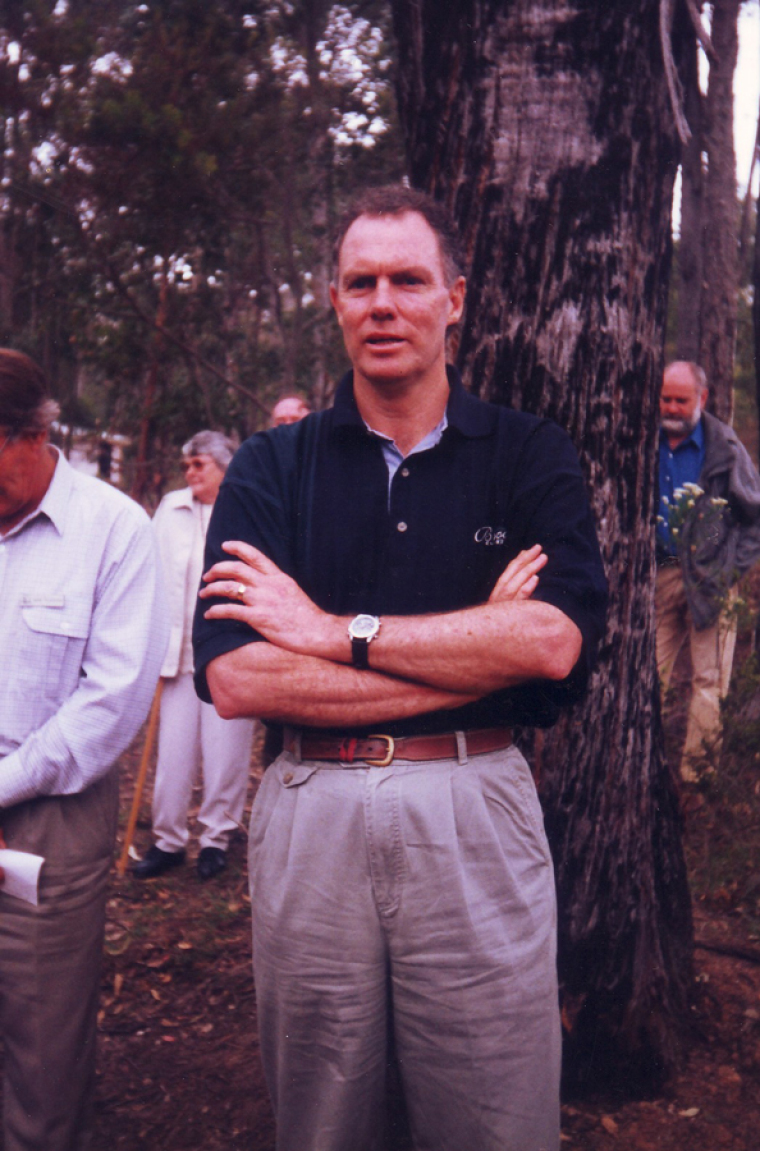

Although it is only September, Christmas items are slowly appearing in shopping centres. We are drawing nearer and nearer to that time where scenes of baby Jesus in the manger will be tactically placed next to, and overshadowed by, the display of Lynx gift boxes we are encouraged to purchase for our slightly eccentric secret-Santa partner.
Yet it may surprise some people to hear establishing the wonderful holiday of Christmas was not really part of Christ's ministry. Sure, most people know Jesus came to earth at Christmas and died at Easter, and some may even have been told 'Jesus died for our sins'.
But this is still rather ambiguous. Even within the church many people, who certainly love Jesus and are overjoyed that He did come to earth, do not know what Christ's earthly ministry actually achieves.
Let's take a look at Christ's priestly ministry, in which He reconciles man and God through the atonement.
Atonement describes the reconciliation between God and humanity as God brings sinners back to Himself, making them 'at one' with Him. This is perhaps the central role in Christ's work and answers the questions, 'Why did Jesus come to earth, and what do His life and death achieve?'
Old Testament background
From almost the beginning of the biblical story, atonement is a constant necessity for humanity in their relationship with God. In the beginning, God creates humanity to live in and tend Eden, in perfect relationship with Him, each other and creation. He promises obedience to Him will lead to eternal, blissful life, while disobedience will lead to death and separation.
However, in only the next chapter, humanity disobeys God and sin enters the world, corrupts the perfect creation and estranges humanity from God. God remarkably responds by promising to send the seed of the woman to ultimately defeat sin (spoiler alert: it's Jesus!) Yet in the meantime humanity is estranged from God.
The sacrificial system
As the Old Testament continues, the sacrificial system is implemented as a means of humanity atoning for their sins. Thank offerings were a symbol of obedience to God and through guilt or sin offerings sinners sought His pardon.
Similarly, on the Day of Atonement (Leviticus chapter 16), the high priest offered a sacrifice to atone for the nation. In this system redemption required shedding of blood. This is because death is sin's penalty, but God allowed a substitute's blood to be shed in the sinner's place. Yet these were temporary as the one promised in the garden had not arrived to definitively defeat sin.
New Testament fulfilment
God's promise is fully realised in the New Testament; as Christ's life, death and resurrection creates atonement between God and sinful humanity.
Jesus was born under the law and was fully obedient, even to death. In death, Christ bore the "curse of the law" (Galatians chapter 3, verse 13) and people's sins were "forgotten" (Romans chapter 3, verses 23-26), justifying humanity to receive life.
Like in the Old Testament, sin's penalty is death, but God provides perfect substitute to receive this death. As John Calvin explains, Jesus, "though spotlessly pure, took upon Him the disgrace... of our iniquities and in return clothed us with His purity."
Metaphors of the atonement
While Christians (generally) agree Christ atones for sins, the reason there are so many questions about why Christ came and what He did is that there is no official teaching to explain how Christ reconciles humans to God.
Did Christ objectively change our bearing in God's eyes? Was the purpose of Jesus's ministry to subjectively leave us a model or influence to follow? There have been many theories or metaphors proposed throughout Christian history.
The moralist Pelagius claimed Christ's death merely provides an inspiring example of faith for believers to emulate, while theologian Gustaf Aulen's 'Christus Victor' theory claims Christ's death was simply the promised militaristic victory over Satan.
Later, in response to any potentially bloodthirsty view of a God who requires death, Peter Abelard proposed a subjective view maintaining Christ's death was a demonstration of God's love leading sinners to repentance. Similarly, Rene Girard proposed Christ's death was an expose of human violence to convict humanity and result the adoption of a more peaceful and loving demeanour.
Penal Substitution
Amidst this swirling sea of differing views, the Reformers, especially John Calvin, taught what would become known as Penal Substitution.
Penal Substitution shows man is estranged from God by sin, which offends God's righteousness and justice. Sin's penalty is death, which God cannot ignore. However God is merciful and so Jesus dies as humanity's substitute, satisfying God's wrath. In this, Jesus' perfect obedience is our thank offering, and His substitutionary death is our guilt offering.
A faithful understanding
In light of the earlier biblical background, I would suggest Penal Substitution is the most faithful explanation of what Christ actually did to reconcile humanity to God.
Humanity deserves death and God's wrath, is separated from God and is in bondage to sin. However, Jesus pays the penalty of death, removed humanity from "wrath, as a propitiation" (1 John chapter 4, verse 10), reconciles the separation and redeems humanity from bondage.
This means humanity, through Jesus, is no longer culpable of death and is entitled to full eternal life through Jesus' vicarious obedience and suffering.
So, why did Jesus come to earth, live and then die? What does this mean for believers?
Well, there are some biblical merits to the other metaphors. Jesus enters human history and through His life, death and resurrection He defeats Satan (Aulen), leaving humans an example (Pelagius), and demonstrating true love (Girard and Abelard).
But it is only because Christ lived obediently and died as a substitution for humanity that these dimensions are possible. Therefore, while Penal Substitution is not the only aspect of atonement, it is the objective foundation for other subjective elements.
So feel free to stock up on those Lynx boxsets and cheap (but oh so delicious) Advent calendars, all the while remembering we are actually commemorating the moment Christ broke into human history to live and die as our substitute, in order to reconcile sinners to the Almighty God who loves us.

Haydn Lea is an associate pastor in Queensland, and is currently studying his Master of Arts (Theology). He has been a member of the Royal Australian Air Force since 2007, and is now training to be an Air Force Chaplain. He is married to Shamsa Lea, and loves distance running and studying Theology.
Haydn Lea's previous articles may be viewed at http://www.pressserviceinternational.org/haydn-lea.html